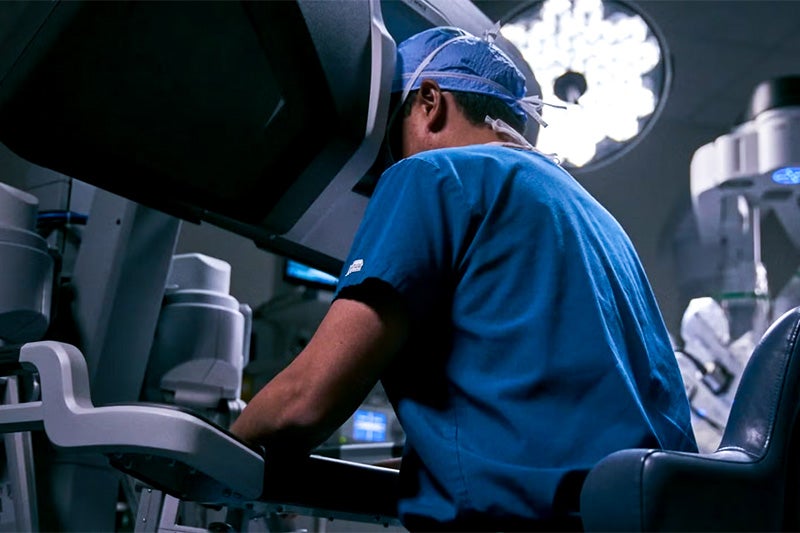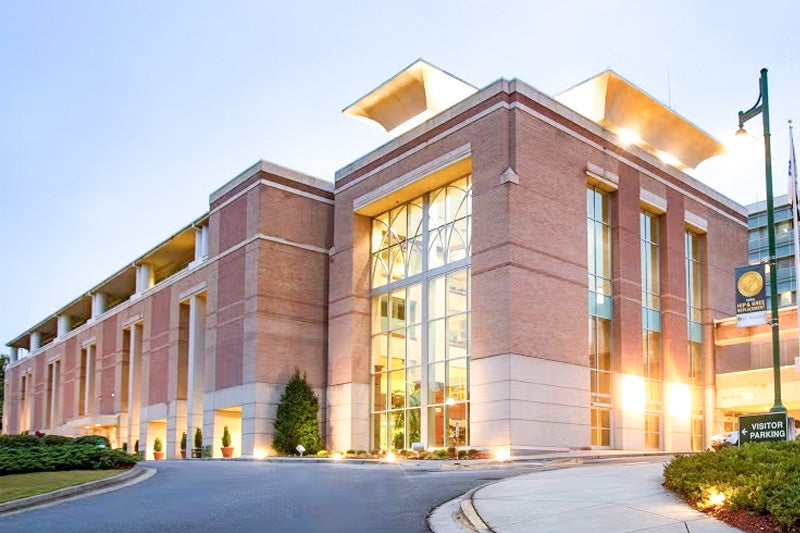How the Da Vinci System Works: A Look Inside the Operating Room
August 11, 2025Categories: Healthy Living
Tags: Robotic Surgery
Robotic Surgery, Made Simple for Patients and Families
If your doctor has recommended robotic-assisted surgery, you probably have questions like: What does that even mean? Is a robot performing the operation?
The answer: Not exactly. The Da Vinci Surgical System is one of the most advanced tools in medicine today, but it doesn’t replace your surgeon. Instead, it enhances their precision, flexibility, and control, all while allowing for smaller incisions and a faster recovery.
At St. Mary’s Health Care System, we strive to ensure that our patients feel informed and confident. Let’s take a look at what the Da Vinci system is, how it works, and why it’s changing lives in the operating room every day.

First Things First: What Is the Da Vinci Surgical System?
The Da Vinci system is a robotic-assisted surgical platform. It allows your surgeon to perform procedures with greater precision and control using tiny instruments through small incisions.
Despite the term “robotic,” the system doesn’t act on its own. Every movement is made by a trained surgeon sitting at a nearby console.
Think of it as a high-tech extension of the surgeon’s hands and eyes, delivering incredible accuracy with minimal disruption to your body.
Is Robotic Surgery Safe?
Absolutely. The Da Vinci system has been in use for over two decades and is trusted in hospitals across the country. At St. Mary’s, our surgical teams are highly trained and experienced in using this technology safely and effectively.
How Does It Work? Breaking It Down Step-by-Step
Here’s what happens during a typical robotic-assisted surgery using the Da Vinci system:
You’re prepped and under anesthesia.
Just like in traditional surgery, you’ll be asleep and carefully monitored throughout the procedure.
Small incisions are made.
Instead of a large surgical cut, your surgeon creates a few tiny openings just big enough for miniature instruments and a camera.
The surgeon takes their place at the console.
From a few feet away in the same room, your surgeon sits at a console with hand controls and a screen that provides a high-definition, 3D view of the surgical area.
The Da Vinci arms go to work, controlled entirely by your surgeon.
The robotic arms hold the instruments and camera. As your surgeon moves their hands and fingers at the console, the system translates those movements with incredible precision, often filtering out even the smallest tremors.
The camera gives a magnified, 3D view.
The surgical field is displayed in high definition with up to 10x magnification, giving the surgeon a view they wouldn’t have with the naked eye.
The procedure is completed, and recovery begins.
Once finished, the instruments are removed, the small incisions are closed, and your healing begins with less pain, less scarring, and often a faster return to normal life.
What Types of Surgeries Can Use the Da Vinci System?
Robotic-assisted surgery can be used across many specialties, including:
- Orthopedics – Joint replacements and repairs
- Gynecology – Hysterectomy, endometriosis, fibroid removal
- Urology – Prostate surgery, bladder procedures
- General surgery – Hernia repair, gallbladder removal
- Colorectal surgery – Treatment of bowel conditions
Not all procedures require robotic assistance, but when it’s the right fit, the benefits can be significant.
Your Questions Matter
We understand that the idea of robotic surgery can sound intimidating, but once patients learn how it really works, most feel relieved, confident, and even excited about the faster healing it can provide.
Whether you’re preparing for surgery or just curious, we’re here to answer your questions and walk you through your options.


What Are the Benefits for Patients?
Most patients who have robotic-assisted surgery with the Da Vinci system experience:
- Smaller incisions and minimal scarring
- Less bleeding and lower risk of infection
- Shorter hospital stays
- Less pain and quicker return to activity
- Higher surgical precision and improved outcomes
Talk to a Provider to Learn More
Interested in whether robotic-assisted surgery is right for you or a loved one? Start with a conversation at one of our welcoming care locations:
- Sacred Heart Primary Care – Lavonia
- St. Mary’s Medical Group – Clayton
- St. Mary’s Internal Medicine Associates – Athens
- St. Mary’s Family Medicine – Athens
- St. Mary’s Family Medicine – Watkinsville
- St. Mary’s Highland Hills Village Clinic – Watkinsville
- Oconee Heart and Vascular Center – Greensboro
- Good Samaritan Primary Care – Greensboro
- St. Mary’s Primary Care – Danielsville


